#roman fashion
Fashion Friday: Adopt a Pompeiian Dog
For my fashion inspiration this week, I turned to ancient Pompeii, an urban land that succumbed to the eruption of Mount Vesuvius in 79 CE, located on the western coast of Italy, southeast of Naples. The ruins of the city laid buried under ash and earth until 1748 when murals and bodies posed as action figures frozen in time were revealed. While much has been excavatied, today, there are still over 50 acres of land yet to be explored, with growing access to the public as the archeology digexpands.
The allure of Pompeii lies in the catastrophic and immediate deaths of so many who failed to escape, becoming concrete mummies in situ. Recent discoveries in a nearby villa have shown scholars that life in Pompeii was not to be envied, with slavery paramount and social welfare nonexistent.
In spite of the tough Pompeii society, the urban streets were very multi-cultural where theatre was performed in Greek. Street vendors and food stalls provided Roman urbanites with stews of sheep, snail, and fish. Graffiti was found everywhere. Inside one food stall is the mural of a chained dog, with graffiti scrawled on the mural’s painted frame, blaspheming a snack bar owner.
Carnal proclivities were not uncommon in ancient Pompeii. For instance, an excavated fresco of the Spartan queen Leda hints at the everyday homage to the eroticism of mythology. In this story, Leda is seduced and raped by Zeus in swan-form bearing heirs whose power continued the deity tradition of wickedness.
Fortunately, today’s leaders of the Great Pompeii Project are using $137 million of EU funds to reach a vast audience, including Instagram and Twitter followers. Prior to this joint effort, the ruins of Pompeii suffered from environmental overexposure, looting, and Italian red-tape while being nestled in a region of organized crime. In fact, packs of stray Pompeiian dogs are now available for adoption as the archeological site leads modern conservationism efforts by abating tourism blight and corruption traps.
My first fashion plate is titled “Dog Paws Dress,” highlighting the round velvet foot-pads of our furry friends. The remaining designs are similarly inspired; can you spot these single inspirations?
Here is a listing of sources from the UWM Special Collections and the New York Times, which I have augmented with digital color and outline to emphasize particular details of my inspiration:
1, 3, 4, 8). Photographs of ancient Pompeii frescoes and two Roman bodies, published by The New York Times, written by Elisabetta Povoledo, 2018 - 2020. Images 3 an 4 inspired my own designs for the Swan Wrap Dress and the Curly Rooster Dress.
2, 8). My interpretation and contemporary design of the Dog Paws Dress inspired by David Hawcock’s pop-up book, The Pompeii Pop-Up, published by Universe Publishing in 2007.
5) Costume illustration of Roman warriors with animal predator as hooded cloak, in Geschichte des Kostums, published by E. Weyhe in 1923.
6) Woodcut prints by the illustrator Kurt Craemer as published in The Last Days of Pompeii by the Limited Editions Club in 1956.
7) Works Projects Administration illustration of Roman warriors as published in the Costumes of the World, 100 Hand Colored Plates from Ancient Egypt to the Gay Nineties in 1940.
9) Jewelry of the Roman civilization with several animal motifs in Alexander Speltz’s plate collection, The Coloured Ornament of All Historical Styles, Part I: Antiquity, published by Baumgärtner in 1915.
10) Ornamentation of Roman aesthetic as seen in Giulio Ferrari’s Volume 1: Gli Stili Nella Forma e nel Colore, Rassegna dell’ arte antica e Moderna di Tutti i Paesi, published by C. Crudo & Co. in 1925.
Viewmy other posts on historical fashion research in Special Collections.
View more Fashion posts.
—Christine Westrich, MFA Graduate Student in Intermedia Arts
Post link
Ancient Roman Armour inspired Runway [3/5]
2:KTZ S/S15mens
3:Versace S/S13mens
4:Moschino Pre-Fall19
5:
6:
Post link
The Roman Republic, and later the Roman Empire, was heavily influenced by Greek culture in everything from its literature to architecture and fashions. Much of our knowledge of early clothing comes to us from works of art, salvaged in part from archaeological digs and now residing in museums all over the world.
The standard Roman garment was the tunic, commonly called the T-tunic, as its cut was basically the shape of a T. Over the tunic, men wore their togas if they went to the Forum. Commoners usually wore plain brown tunics of wool. Yes, even in the summer, but their wool was not what ours is today. Rather, it was a soft weave and could be worn in the summer. Patricians or nobles wore garments of linen and silk, usually ornamented with a band (or bands) to denote their office or status.
Women wore tunics too, and since most of what we know comes from extant art, which more commonly depicts well-off citizens, the elegant draping of garments during this period looks much like Greek fashion. Over a lady’s tunic, which might only come to her knees, she wore a stola, a floor-length dress styled much like our jumpers, clasped at the shoulders with ornamental fasteners. Over this came a palla, a shawl of sorts, worn draped around the shoulders or waist. In cold weather, she wore a cloak, sometimes hooded.
Clothing changed little until the 5th century, an era we call Byzantine, a term coined later and one the Byzantines themselves never used. Byzantine dress is fascinating and I’ll blog about that later.
Source: http://historicalhussies.blogspot.com/2009/01/roman-clothing-bc-to-5-ad.html

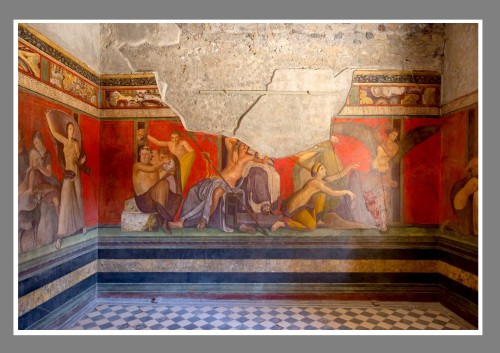
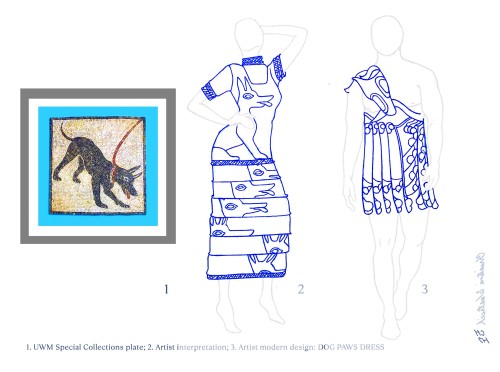


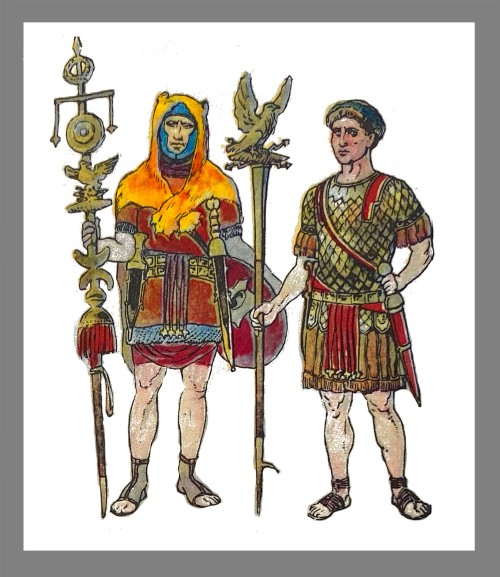

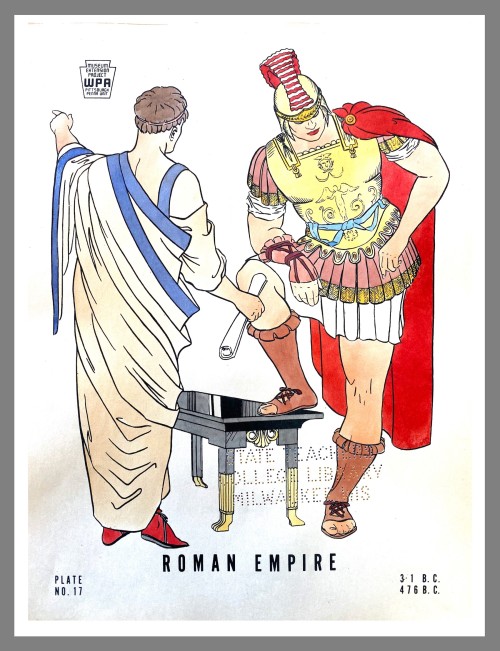

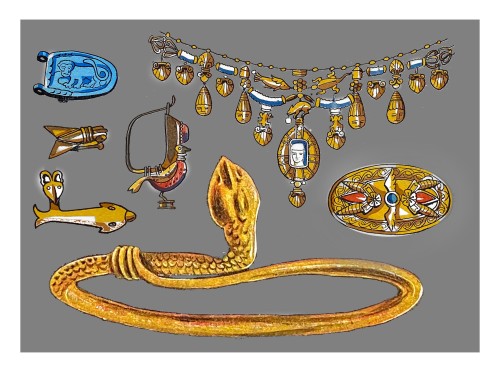

![Ancient Roman Armour inspired Runway [3/5]1: Prada A/W09rtw2: KTZ S/S15mens3: Versace S/S13mens4: Ancient Roman Armour inspired Runway [3/5]1: Prada A/W09rtw2: KTZ S/S15mens3: Versace S/S13mens4:](https://64.media.tumblr.com/c199836e6f5760110df1df07551f55ac/2dacc26c8d416361-09/s500x750/7e31fcf91bf360a5912eee185bc3f7db5b0c1595.jpg)
![Ancient Roman Armour inspired Runway [3/5]1: Prada A/W09rtw2: KTZ S/S15mens3: Versace S/S13mens4: Ancient Roman Armour inspired Runway [3/5]1: Prada A/W09rtw2: KTZ S/S15mens3: Versace S/S13mens4:](https://64.media.tumblr.com/218ffbb0466079ede976c3bdc93befd4/2dacc26c8d416361-b7/s500x750/f235650cfdbe23a576a542ce9634f564db50ac1b.jpg)
![Ancient Roman Armour inspired Runway [3/5]1: Prada A/W09rtw2: KTZ S/S15mens3: Versace S/S13mens4: Ancient Roman Armour inspired Runway [3/5]1: Prada A/W09rtw2: KTZ S/S15mens3: Versace S/S13mens4:](https://64.media.tumblr.com/1f8ffb63ef95ef28b7d3f892c4b0184e/2dacc26c8d416361-39/s500x750/627570236efb525ca51c953bee718b8ba8c40c84.jpg)
![Ancient Roman Armour inspired Runway [3/5]1: Prada A/W09rtw2: KTZ S/S15mens3: Versace S/S13mens4: Ancient Roman Armour inspired Runway [3/5]1: Prada A/W09rtw2: KTZ S/S15mens3: Versace S/S13mens4:](https://64.media.tumblr.com/cb87309167c0d1ce5b6a472587251d2c/2dacc26c8d416361-03/s500x750/04f9304c669a09687f9255cba702a1b9027a5baf.jpg)
![Ancient Roman Armour inspired Runway [3/5]1: Prada A/W09rtw2: KTZ S/S15mens3: Versace S/S13mens4: Ancient Roman Armour inspired Runway [3/5]1: Prada A/W09rtw2: KTZ S/S15mens3: Versace S/S13mens4:](https://64.media.tumblr.com/ff85219038f54bff948cdf20f725c9c1/2dacc26c8d416361-be/s500x750/50e9ff97fb4772754d04fa7f5267e88b99b9a085.jpg)
![Ancient Roman Armour inspired Runway [3/5]1: Prada A/W09rtw2: KTZ S/S15mens3: Versace S/S13mens4: Ancient Roman Armour inspired Runway [3/5]1: Prada A/W09rtw2: KTZ S/S15mens3: Versace S/S13mens4:](https://64.media.tumblr.com/6e0844f0206b31ea69a5547a4fbd264a/2dacc26c8d416361-04/s500x750/97b7808d63046464090ebd6ae67beaf0a3fa3eb2.jpg)